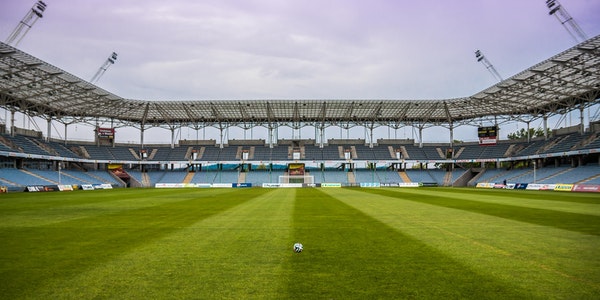Community Engagement: Sports facilities that prioritize sustainability can engage with the community and stakeholders, fostering goodwill and support.
- Conclusion
LED lighting stands out as the most environmentally friendly lighting technology, offering superior energy efficiency, longer lifespan, and absence of hazardous materials. By reducing energy consumption, greenhouse gas emissions, and waste production, LEDs contribute to environmental sustainability and support efforts to mitigate climate change. Transitioning to LED lighting in sports facilities not only enhances operational efficiency and performance but also demonstrates a commitment to environmental responsibility and stewardship.
III. Enhancements in LED Sports Lighting
A. Improved Light Quality
1. Better color rendering (CRI – Color Rendering Index)
(I) Color Rendering Index (CRI) Explained
Definition:
The Color Rendering Index (CRI) measures the ability of a light source to accurately render colors compared to a reference light source, typically daylight or incandescent light.
CRI is expressed as a numerical value ranging from 0 to 100, with higher values indicating better color rendering.
Importance:
High CRI is essential for environments where accurate color perception is critical, such as sports venues, where players need to distinguish between different-colored objects accurately.
(II) Advantages of LED Lighting for Color Rendering
High CRI Options:
LEDs offer a wide range of options with high CRI values, typically ranging from 80 to 95 or higher.
High-CRI LEDs accurately reproduce colors, ensuring that players can distinguish between team uniforms, equipment, and other elements on the field or court.
Wide Color Temperature Range:
LEDs can produce light across a broad spectrum of color temperatures, from warm to cool tones.
This versatility allows sports facilities to choose lighting that suits their specific needs while maintaining high color rendering performance.
Consistency and Uniformity:
LED lighting provides consistent color rendering across the entire venue, ensuring uniform illumination without color variations or shadows.
This consistency enhances the visual experience for both players and spectators, contributing to an immersive and engaging atmosphere.
(III) Practical Implications for Sports Lighting
Enhanced Visual Acuity:
LED lighting with high CRI improves visual acuity for players by accurately representing colors, lines, and markings on the field or court.
This enables players to make quick decisions and react effectively during fast-paced gameplay.
Improved Broadcast Quality:
High-CRI LED lighting enhances the quality of televised sports broadcasts by faithfully reproducing colors, providing viewers with a more immersive and enjoyable viewing experience.
Broadcasters can capture the action with greater clarity and detail, enhancing the overall production value of sporting events.
Spectator Experience:
LED lighting with superior color rendering creates a vibrant and dynamic atmosphere for spectators, enhancing their enjoyment of the game.
Vivid and lifelike colors contribute to a memorable experience, encouraging repeat attendance and positive word-of-mouth promotion.
(IV) Conclusion
LED lighting offers significant advantages for color rendering in sports venues, with high CRI options that accurately reproduce colors and enhance visual clarity for players, broadcasters, and spectators alike. By providing consistent and uniform illumination, LED lighting creates an immersive and engaging environment that enhances the overall sports experience. As a result, LED technology continues to be the preferred choice for sports lighting applications, delivering superior performance and reliability.
2. Uniformity of lighting
(1) Importance of Uniform Lighting
Definition:
Uniform lighting refers to consistent illumination levels across the entire playing field or court.
It ensures that players, officials, and spectators experience consistent visibility without areas of excessive brightness or shadow.
Key Considerations:
Player Performance: Uniform lighting enables players to track fast-moving objects, such as balls or opponents, without visual distractions or inconsistencies.
Safety: Consistent lighting reduces the risk of glare or visual discomfort, minimizing the potential for accidents or injuries during gameplay.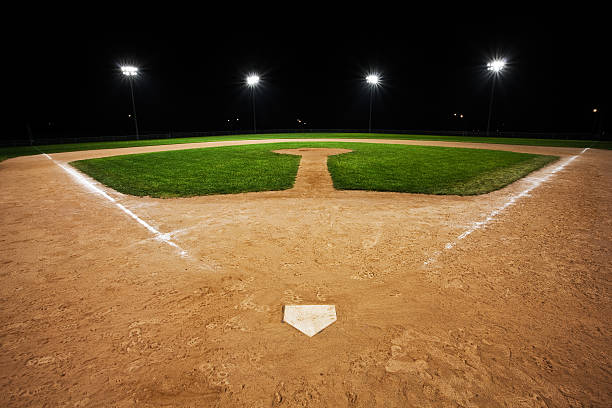
Broadcast Quality: Uniform lighting enhances the quality of televised broadcasts by providing clear and consistent visuals for viewers.
(II) Advantages of LED Lighting for Uniformity
Precise Beam Control:
LED fixtures offer precise beam control, allowing for customizable light distribution patterns tailored to the specific requirements of sports venues.
This enables lighting designers to achieve uniform illumination levels across the playing surface, eliminating dark spots or areas of excessive brightness.
Optimized Light Distribution:
LED luminaires can be strategically positioned and aimed to ensure even light distribution without shadows or hotspots.
Advanced optical designs and lenses further enhance light uniformity, providing consistent lighting from every fixture.
Dynamic Control Systems:
LED lighting systems can incorporate dynamic control features, such as dimming or zoning, to adjust light levels and distribution based on changing needs.
This flexibility allows venues to adapt lighting conditions for different sports, events, or time of day while maintaining uniformity.
(III) Practical Implications for Sports Lighting
Enhanced Player Performance:
Uniform LED lighting promotes optimal visibility for players, enabling them to accurately track the trajectory of balls and make split-second decisions with confidence.
Consistent lighting conditions contribute to fair gameplay by ensuring that all players have equal visibility regardless of their position on the field or court.
Improved Spectator Experience:
LED lighting with uniform illumination creates a visually appealing environment for spectators, enhancing their enjoyment of the game.
Clear and consistent visibility allows fans to follow the action effortlessly, regardless of their seating location within the venue.
Broadcast Quality:
Uniform LED lighting enhances the quality of televised broadcasts by providing broadcasters with consistent lighting conditions for capturing high-definition footage.
Clear and evenly lit playing surfaces ensure that viewers at home can see the action in detail, enhancing the overall viewing experience.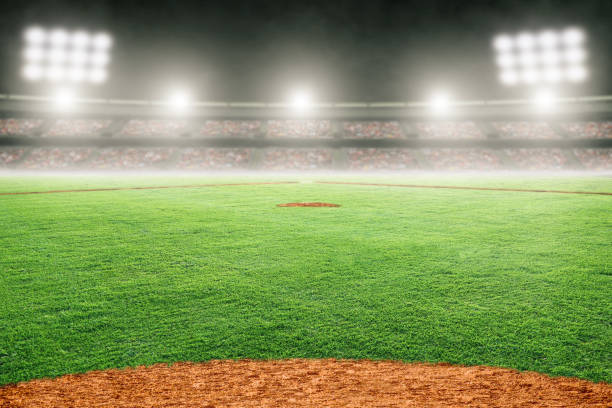
(IV) Conclusion
LED lighting technology offers significant advantages for achieving uniform illumination in sports venues, ensuring consistent visibility for players, spectators, and broadcasters. With precise beam control, optimized light distribution, and dynamic control capabilities, LED luminaires enable lighting designers to create visually appealing environments that enhance the overall sports experience. As a result, LED lighting continues to be the preferred choice for sports lighting applications, delivering superior performance, reliability, and versatility.
3. Reduced glare
(I) Understanding Glare
Definition:
Glare refers to excessive brightness or harsh contrast that causes visual discomfort or impairment.
It can result from direct or reflected light sources and can affect players, officials, and spectators alike.
Types of Glare:
Discomfort Glare: Causes discomfort but does not necessarily impair vision.
Disability Glare: Impairs vision and reduces visibility, posing safety risks in sports venues.
(II) Advantages of LED Lighting for Glare Reduction
Directional Light Output:
LEDs emit directional light, allowing lighting designers to control the direction and intensity of light beams.
This minimizes the risk of glare by directing light precisely where it is needed and avoiding unnecessary spillage.
Optical Control Features:
LED luminaires can incorporate advanced optical control features, such as lenses, diffusers, and louvers, to reduce glare and control light distribution.
These components help diffuse light and minimize direct glare by spreading it evenly across the playing surface.
Anti-Glare Design:
LED fixtures can be designed with anti-glare features, such as baffles or shields, to prevent direct line-of-sight to light sources.
This reduces the perception of glare and enhances visual comfort for players and spectators.
(III) Practical Implications for Sports Lighting
Enhanced Visual Comfort:
Reduced glare from LED lighting improves visual comfort for players, officials, and spectators, allowing them to focus on the game without distractions.
Players can track fast-moving objects more effectively, reducing the risk of errors or accidents due to impaired vision.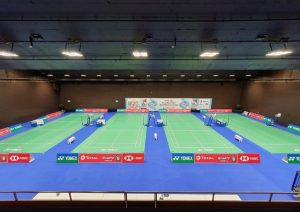
Minimized Eye Strain:
LED lighting with reduced glare minimizes eye strain and fatigue, particularly during extended periods of gameplay or spectating.
Clear and comfortable lighting conditions contribute to a more enjoyable and immersive sports experience.
Improved Safety:
By minimizing disability glare, LED lighting enhances safety in sports venues by ensuring clear visibility for players and officials.
Reduced glare reduces the risk of visual impairment and enhances the ability to perceive hazards or obstacles on the playing surface.
(IV) Conclusion
LED lighting technology offers significant advantages for reducing glare in sports venues, enhancing visual comfort, and improving safety for players, officials, and spectators. With directional light output, advanced optical control features, and anti-glare design elements, LED luminaires provide clear and comfortable lighting conditions that enhance the overall sports experience. As a result, LED lighting continues to be the preferred choice for sports lighting applications, delivering superior performance, reliability, and visual comfort.
B. Customization and Control
1. Programmable lighting scenarios
(I) Introduction to Programmable Lighting
Definition:
Programmable lighting refers to the ability to control lighting systems remotely or automatically through predefined settings or customized programs.
It allows sports venues to create dynamic lighting scenarios tailored to different activities, events, or time of day.
Key Components:
Control System: Centralized control platform for managing lighting fixtures, zones, and programming.
Lighting Fixtures: LED luminaires equipped with dimming, color-changing, and scheduling capabilities.
Sensors: Optional sensors for detecting occupancy, ambient light levels, and other environmental factors.
(II) Advantages of Programmable Lighting
Flexibility and Versatility:
Programmable lighting systems offer flexibility to adjust light levels, colors, and effects to suit various sports, events, or user preferences.
Venues can create custom lighting scenarios for practices, games, concerts, and other activities without the need for manual adjustments.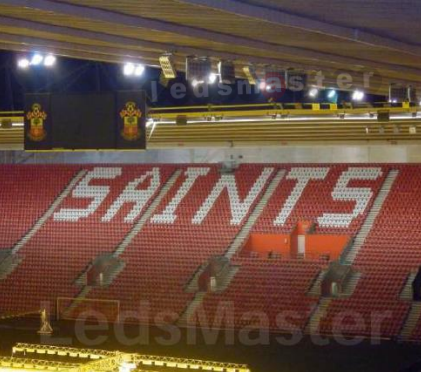
Energy Efficiency:
Scheduled lighting programs optimize energy use by automatically adjusting light levels based on occupancy patterns, time of day, or ambient light conditions.
Dimming and zoning capabilities allow venues to illuminate specific areas as needed, reducing energy consumption and operating costs.
Enhanced Experience:
Dynamic lighting effects enhance the spectator experience by creating immersive atmospheres that complement the action on the field or court.
Color-changing capabilities allow venues to customize lighting for team colors, special events, or branding opportunities.
(III) Practical Applications in Sports Venues
Gameplay Enhancement:
Adaptive Lighting: Adjust light levels and distribution to optimize visibility for different sports, playing conditions, or broadcast requirements.
Dynamic Effects: Create dramatic lighting effects, such as player introductions or halftime shows, to engage fans and enhance the overall atmosphere.
Event Hosting:
Concerts and Performances: Customize lighting scenes to create concert-like experiences with dynamic color changes and effects synchronized to music.
Corporate Events: Tailor lighting settings to match corporate branding or sponsor preferences for special events or functions hosted in the venue.
Energy Management:
Scheduled Dimming: Automatically dim or turn off lights in unoccupied areas or during non-peak hours to conserve energy and reduce operating costs.
Daylight Harvesting: Adjust lighting levels based on natural daylight levels to maintain consistent illumination while maximizing energy savings.
(IV) Integration with Smart Technologies
Centralized Control Platforms:
Integrate lighting controls with other smart building systems, such as HVAC, security, and audiovisual, for centralized management and automation.
Enable remote monitoring and control via mobile apps or web interfaces for convenient access and real-time adjustments.
Data Analytics:
Collect and analyze data from lighting systems to optimize performance, identify energy-saving opportunities, and track usage patterns over time.
Use insights to fine-tune lighting programs and improve operational efficiency.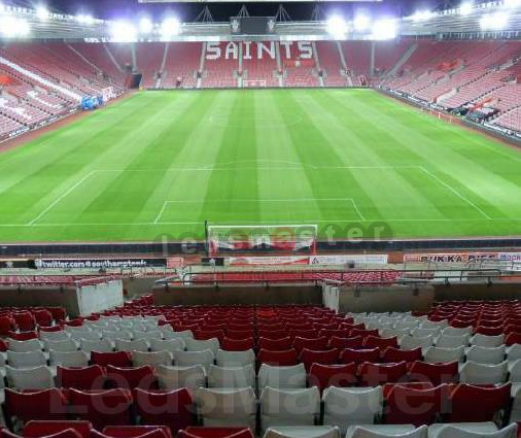
(V) Conclusion
Programmable lighting systems offer sports venues a wide range of benefits, including flexibility, energy efficiency, and enhanced experiences for players, spectators, and event organizers. By leveraging advanced control capabilities and integrating with smart technologies, venues can create dynamic lighting scenarios tailored to specific needs and preferences while maximizing efficiency and sustainability. As programmable lighting continues to evolve, it will play an increasingly important role in shaping the future of sports venue design and operations.
2. Adaptive lighting based on conditions (time of day, weather, etc.)
(I) Introduction to Adaptive Lighting
Definition:
Adaptive lighting systems dynamically adjust light levels, color temperatures, and distribution based on changing environmental conditions such as time of day, weather, occupancy, and activity levels.
These systems use sensors, controls, and intelligent algorithms to optimize lighting performance and energy efficiency in real-time.
Key Components:
Sensors: Detect environmental factors including daylight levels, occupancy, motion, and ambient temperature.
Controls: Centralized control platform for managing lighting fixtures and programming adaptive scenarios.
LED Fixtures: Luminaire equipped with dimming, color-changing, and scheduling capabilities for dynamic adjustments.
(II) Advantages of Adaptive Lighting
Optimized Visibility:
Adaptive lighting ensures optimal visibility for players, officials, and spectators by adjusting light levels and distribution to match changing conditions.
Brightness and color temperature are dynamically tuned to minimize glare and maximize visual comfort.
Energy Efficiency:
By responding to natural light levels and occupancy patterns, adaptive lighting systems minimize energy consumption and operating costs.
Dimming and zoning capabilities enable precise control over lighting, reducing wasteful over-illumination.
Enhanced Experience:
Dynamic lighting effects enhance the overall atmosphere of sports events, concerts, and other activities, creating memorable experiences for attendees.
Adaptive lighting can be synchronized with audiovisual elements to create immersive and engaging environments.
(To Be Continued)

